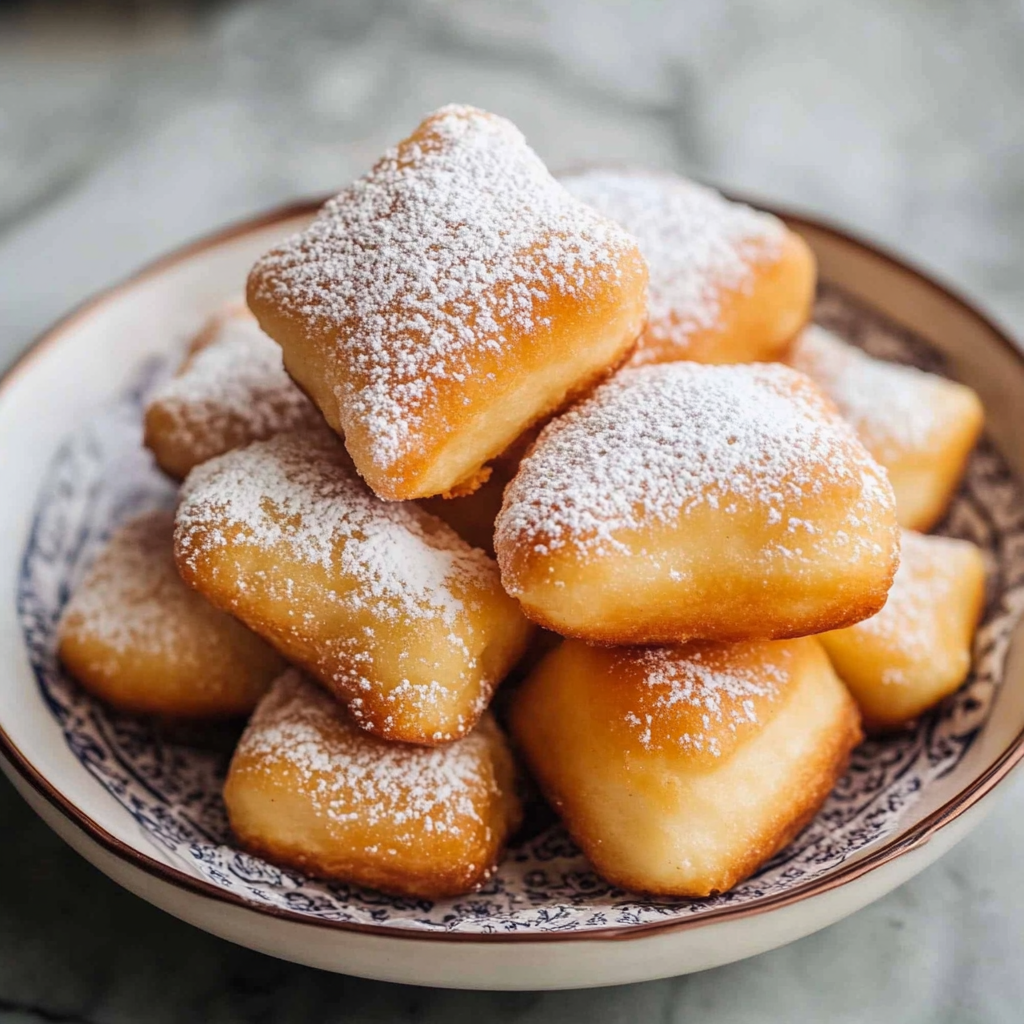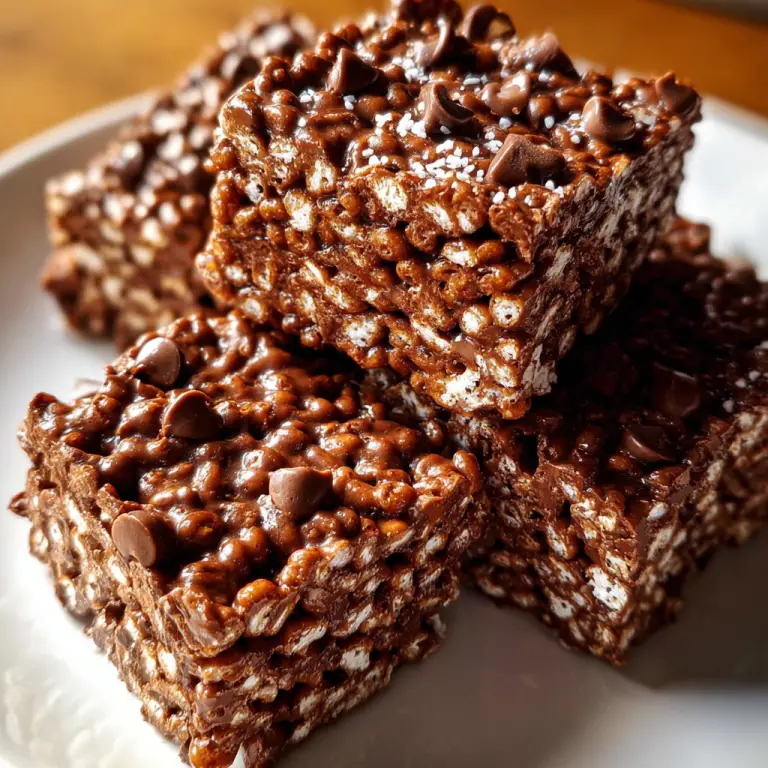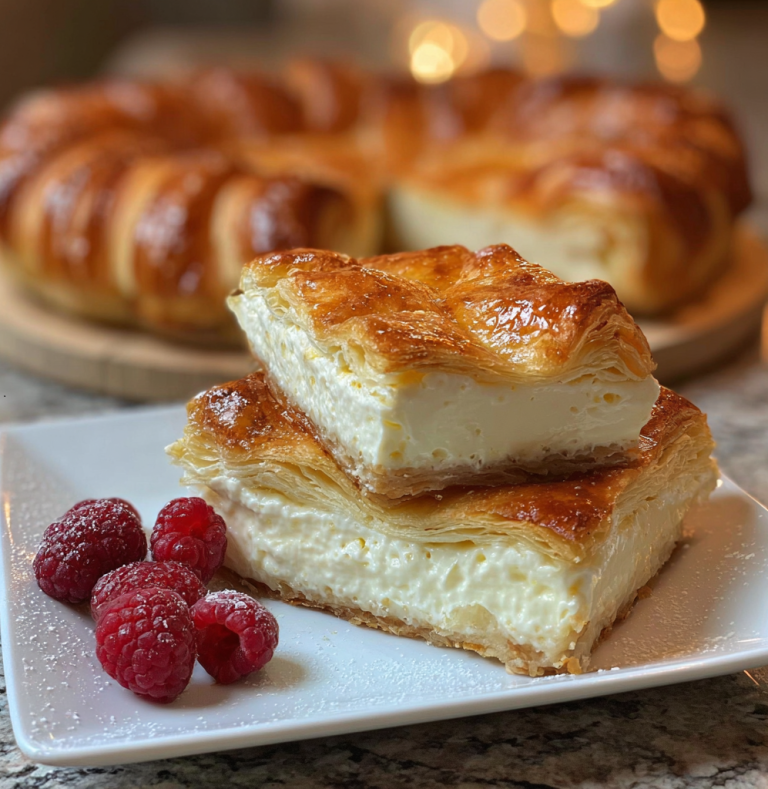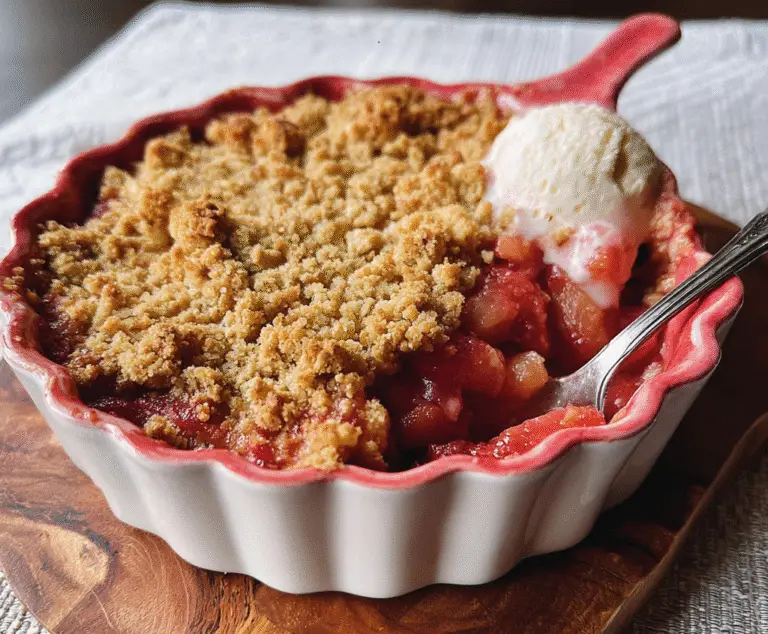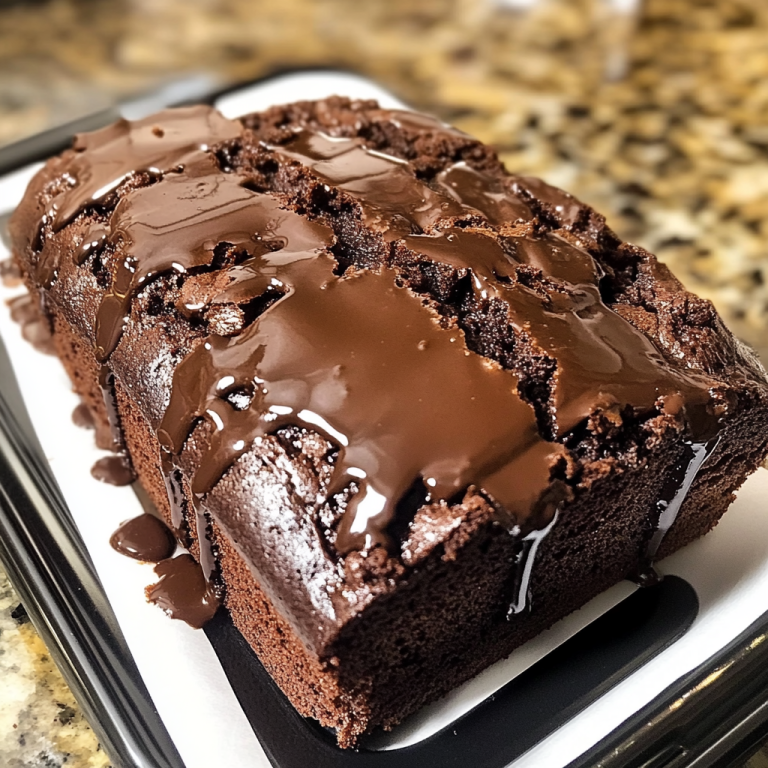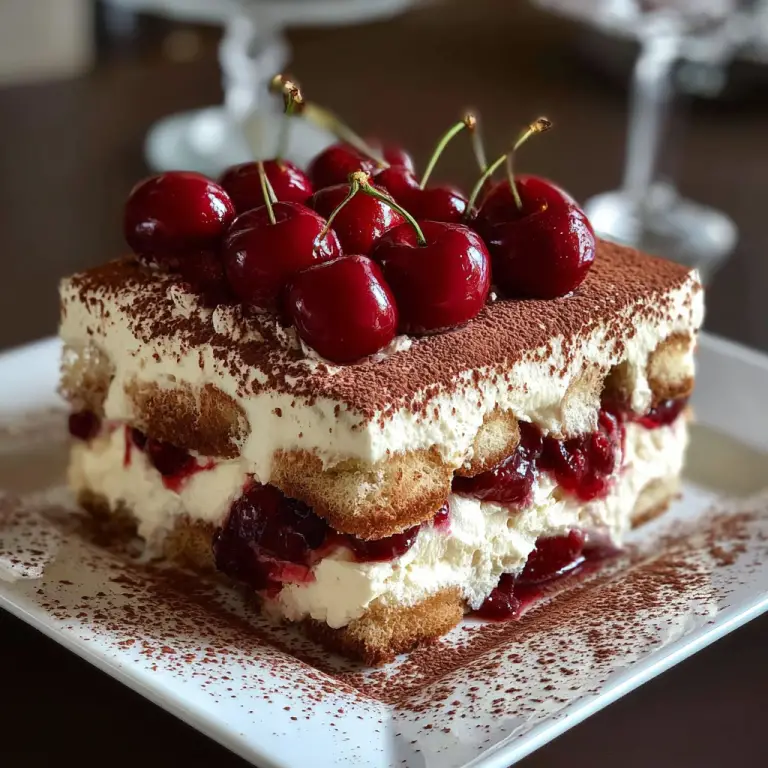Vanilla French Beignets
Vanilla French beignets are a delightful twist on the classic French pastry that has captivated taste buds for centuries. These light, airy treats are typically deep-fried and dusted with powdered sugar, creating a perfect blend of sweetness and indulgence. In this comprehensive guide, you’ll discover everything you need to know to make perfect vanilla French beignets at home.
Introduction to Vanilla French Beignets
Originating in France, beignets are a staple in the culinary landscape of New Orleans and beyond. These pillowy pastries are known for their light and airy texture and signature dusting of powdered sugar. By adding a touch of vanilla extract or vanilla bean paste, you can elevate the classic beignet into a more aromatic and flavorful treat.
What Are French Beignets?
French beignets are essentially deep-fried doughnuts made from a yeast-based dough. Unlike typical American doughnuts, they’re lighter and fluffier, making them perfect for breakfast or dessert.
- Classic beignets: Lightly sweetened, airy dough dusted with powdered sugar.
- Variations: Some recipes incorporate fruit fillings or flavored sugars.
- Vanilla twist: Incorporating vanilla extract or vanilla bean seeds infuses the beignets with a warm, sweet aroma that pairs beautifully with their delicate texture.
For the best flour for beignets, consider high-quality all-purpose flour like the options recommended by King Arthur Baking. Using the right flour ensures the light and airy texture that defines a great beignet.
Ingredients for the Perfect Vanilla French Beignets
Here’s what you’ll need to make vanilla French beignets:
- 2 ½ cups all-purpose flour
- 2 tbsp granulated sugar
- ½ tsp salt
- 2 ¼ tsp active dry yeast
- ½ cup warm milk
- 2 large eggs
- 3 tbsp unsalted butter (melted)
- 2 tsp vanilla extract (or the seeds from one vanilla bean)
- Vegetable oil for frying
- Powdered sugar for dusting
📝 Pro tip: Fresh, high-quality vanilla extract or a vanilla bean will significantly enhance the flavor.
Step-by-Step Recipe Instructions
1: Preparing the Dough
- In a bowl, combine warm milk and yeast; let sit for 5 minutes until foamy.
- Add sugar, eggs, melted butter, and vanilla extract; mix well.
- Gradually add flour and salt; knead until smooth.
2: Proofing and Rolling
- Cover dough and let it rise in a warm place until doubled (about 1 hour).
- On a lightly floured surface, roll dough to ½ inch thickness.
3: Cutting and Shaping
- Cut dough into squares or use a round cutter for a classic shape.
- Let shaped dough rest for 15 minutes.
4: Frying the Beignets
- Heat oil to 350°F (175°C). Learn about oil temperature and frying tips from Serious Eats.
- Fry beignets in small batches until golden brown (about 2 minutes per side).
- Remove with a slotted spoon and drain on paper towels.
5: Dusting and Serving
- Generously dust with powdered sugar while warm.
- Serve immediately for the best flavor.
For more crispy, satisfying bites, you might also try these crispy bang bang salmon bites, which make an excellent snack or appetizer.
Tips and Tricks for Perfect Beignets Every Time
Mastering vanilla French beignets is an art that requires a few key tips and tricks to achieve that signature light and airy texture with a delicate golden exterior. Here’s how to ensure your beignets come out perfect every time:
1. Don’t Over-Knead the Dough
Beignets are meant to be tender and fluffy, so knead the dough just until it comes together. Over-kneading can develop too much gluten, resulting in a tough, chewy texture instead of the desired pillowiness.
2. Use Fresh Yeast
Yeast is the secret behind those airy pockets inside each beignet. Make sure your yeast is fresh and properly activated by dissolving it in warm (not hot) milk. The milk should be between 100°F and 110°F—too hot, and it can kill the yeast; too cold, and it won’t activate properly.
3. Maintain Consistent Oil Temperature
Keep the oil at a steady 350°F (175°C). Use a thermometer to monitor the heat, as too-cool oil will make the beignets greasy while too-hot oil can burn them quickly without cooking the inside.
4. Fry in Small Batches
Avoid overcrowding the fryer or pot, as this can lower the oil temperature and lead to uneven cooking. Frying in small batches ensures consistent, golden-brown results.
5. Enhance with Vanilla Bean Paste
For an extra boost of flavor, substitute vanilla extract with vanilla bean paste. It adds beautiful specks and a deeper, more authentic vanilla aroma.
With these tips, your vanilla French beignets will be bakery-perfect every single time! 🍩✨
Vanilla Variations and Flavor Enhancements
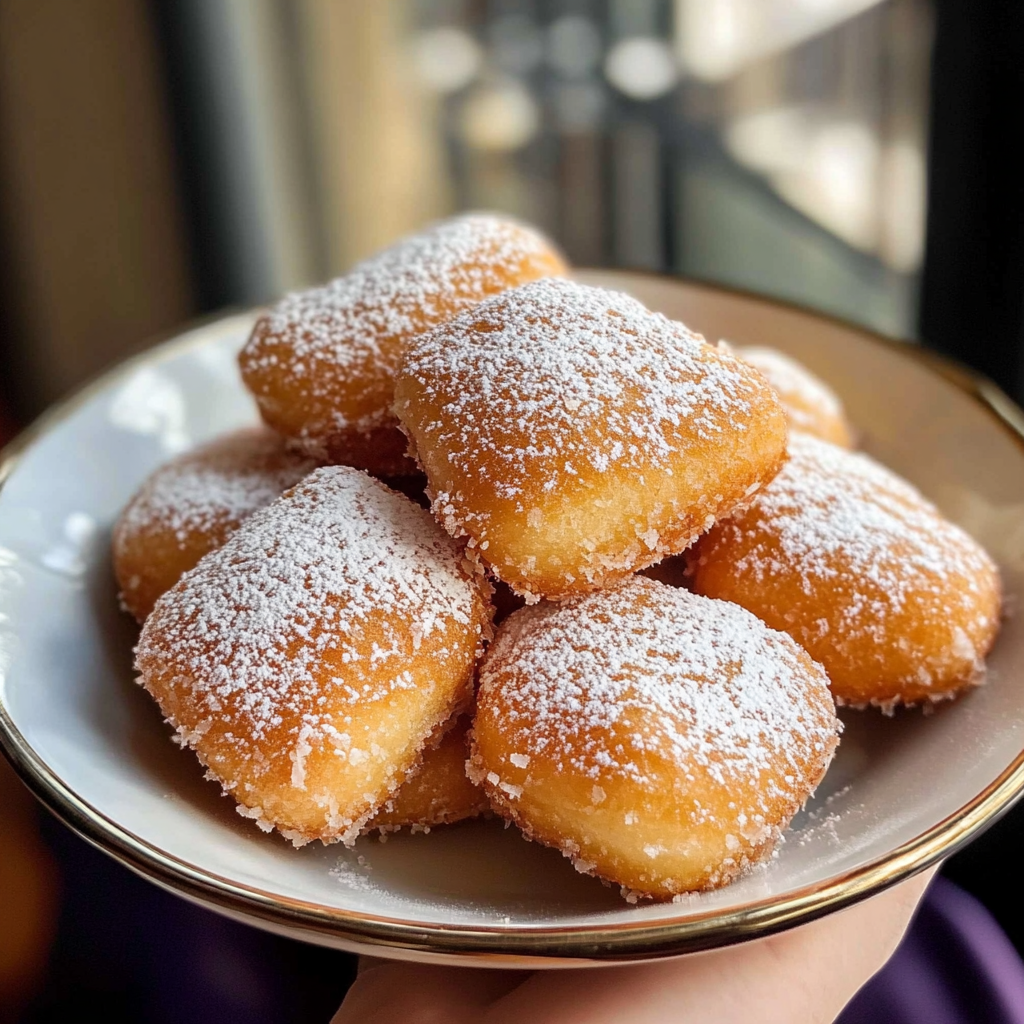
Get creative with your vanilla French beignets:
- Vanilla bean sugar: Mix vanilla bean seeds with powdered sugar for an aromatic dusting.
- Infused vanilla glaze: Combine vanilla extract with powdered sugar and milk for a drizzle.
- Spice it up: Add a pinch of cinnamon or nutmeg for a warm, spiced note.
For more information on choosing vanilla extract vs. vanilla bean, check out Vanilla Queen.
Serving Suggestions
Vanilla French beignets are a versatile treat that can be enjoyed in countless ways, making them perfect for any occasion. Whether you’re serving them for breakfast, brunch, dessert, or a sweet snack, there are plenty of ways to enhance the experience.
Classic Presentation
Serve your freshly fried beignets warm, dusted generously with powdered sugar. Stack them high on a decorative plate and place them at the center of the table—guaranteed to catch everyone’s eye and tempt even the most disciplined eaters.
Breakfast & Brunch Ideas
- Pair vanilla French beignets with a strong cup of coffee or a café au lait for an authentic Parisian café experience.
- Serve alongside fresh fruit or a berry compote to balance the sweetness with a touch of tartness.
- Drizzle a light vanilla glaze over the top for an extra burst of flavor.
Dessert Twists
- Turn your beignets into a luxurious dessert by serving them with a scoop of vanilla ice cream and a drizzle of caramel or chocolate sauce.
- Offer a variety of dips like chocolate ganache, fruit preserves, or even Nutella for a fun, interactive dessert platter.
Entertaining Tips
- Arrange your beignets on a tiered dessert stand for a stunning brunch or dessert table centerpiece.
- Sprinkle with vanilla bean sugar or add a dash of cinnamon for a festive touch during the holidays.
With their irresistible texture and sweet aroma, vanilla French beignets are the ultimate crowd-pleaser. Bon appétit! 🍩✨
Storing and Reheating Beignets
After indulging in a fresh batch of vanilla French beignets, you might find yourself with a few leftovers—lucky you! Proper storage and reheating are key to preserving their light and airy texture and ensuring they remain just as delicious the next day.
Storing Beignets
- Room Temperature: Place any leftover beignets in an airtight container lined with parchment paper or a paper towel to absorb excess moisture. Store at room temperature for up to 2 days.
- Refrigeration: While beignets can be refrigerated, it’s not recommended as it tends to dry them out and compromise their fluffy texture.
- Freezing: For longer storage, wrap each beignet individually in plastic wrap or foil, then place them in a freezer-safe zip-top bag. They can be frozen for up to 2 months.
Reheating Beignets
- Oven Method: Preheat your oven to 300°F (150°C). Place beignets on a baking sheet lined with parchment paper and heat for 5-7 minutes, or until warmed through. This method helps maintain their crispy exterior.
- Microwave Method: Place a beignet on a microwave-safe plate and cover it with a damp paper towel. Microwave on medium for 10-15 seconds. This method is quick but may soften the exterior.
- Air Fryer Method: For a crispier result, place beignets in an air fryer at 300°F (150°C) for about 3 minutes.
When reheated properly, vanilla French beignets can taste almost as good as freshly made—perfect for breakfast or a sweet afternoon treat! 🍩✨
Frequently Asked Questions (FAQs)
Q1: Can I make vanilla beignets without yeast?
No; yeast is essential for the light and airy texture. However, some recipes use baking powder as a substitute for a quick version, but they won’t have the same flavor.
Q2: How do I prevent my beignets from deflating?
Ensure the oil is at the correct temperature (350°F) and avoid overcrowding the fryer.
Q3: Can I bake beignets instead of frying?
Technically yes, but they’ll lack the traditional texture and flavor. Frying is key to authentic beignets.
Q4: How long does the dough need to rise?
About 1 hour, or until doubled in size.
Q5: Can I make vegan vanilla French beignets?
Yes! Substitute eggs with flaxseed meal and use plant-based milk and butter.
Q6: What oil is best for frying?
Use neutral oils like vegetable, canola, or peanut oil with a high smoke point.
Q7: Can I fill vanilla beignets with cream or jam?
Absolutely! Inject pastry cream or fruit jam after frying.
Q8: How do I get the perfect golden brown color?
Maintain consistent oil temperature and avoid overcrowding.
Conclusion
Making vanilla French beignets at home is a delightful way to bring a touch of French pastry magic to your kitchen. With their light and airy texture and aromatic vanilla infusion, these treats are perfect for breakfast, brunch, or dessert. By following the step-by-step instructions provided—kneading the dough, proofing it properly, and frying at the right temperature—you’ll achieve that authentic golden brown color and irresistible fluffiness that makes French beignets so special.
Remember to use high-quality vanilla extract or vanilla bean paste to enhance the flavor, and don’t hesitate to experiment with additional spices or flavored sugars for a personalized touch. The yeast-based dough is key to achieving that signature airy bite, so patience during the proofing stage is essential.
Whether you serve your beignets alongside a morning coffee, pair them with fresh fruit, or offer them as a sweet treat for brunch, they’re sure to impress family and friends alike. Dust them generously with powdered sugar and enjoy the delicate crunch in every bite.
If you’re looking to elevate your baking game, vanilla French beignets are a must-try addition to your recipe repertoire. Happy baking—and bon appétit! 🍩✨

